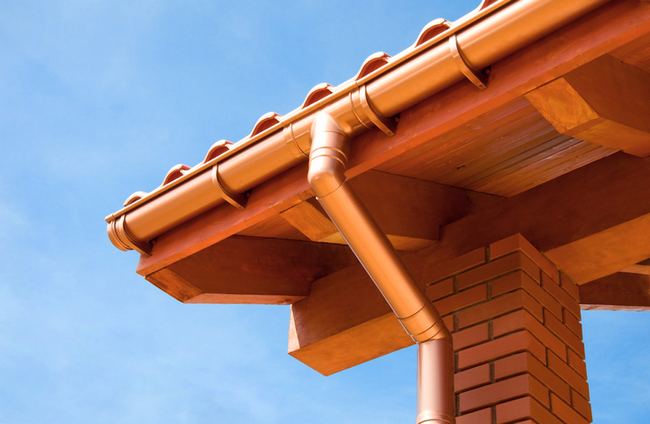Although your roof does the bulk of the job of keeping rainwater out of your home, your gutters also play an important part. Without a properly installed and maintained gutter system, water can get into your home via your basement, foundation or – with clogged gutters – by backing up onto your roof. Choosing the right gutter system – one that’s properly engineered and installed, made of a durable material and that can stay clear with the best gutter protection – is essential if you want to prevent damage to your home.

Gutter Materials
Depending on the style of your home and your budget, you have several good options for gutters.
- Aluminum – By far the most popular gutter material. Aluminum won’t rust and most gutter installers offer seamless aluminum gutters made on-site for a perfect fit. Plus, aluminum gutters are available in many colors and are affordable. If you’re adding aluminum gutter covers, you will often find matching color options.
- Vinyl – Although vinyl gutters are among the least expensive, they don’t last very long. The sun and changing weather conditions take a toll on the plastic they’re made from. If you are in an area that experiences a lot of snow and ice, you should avoid vinyl as you may quickly see cracks.
- Stainless steel – Another popular option, the benefit of stainless steel is that it looks great for years and lasts for decades without rusting. However, it’s also heavy and expensive. Aluminum gutter covers work well with stainless steel gutters.
- Copper – Copper is the most expensive gutter material, but it adds distinctive style and charm. The patina that develops over the years needs to be considered before installation. Depending on the style, you’ll want to talk with your installer about the best gutter protection.
Gutter Protection
Gutter protection comes in more material options than gutters themselves! Each has its own set of pros and cons. However, more important than the material is the design of the gutter cover; this really makes a difference in how it works. Some options are:
- In-gutter options. Things like foam or mesh tubing that sit in your gutters are among the least expensive and least effective options; they act as a water filter for only a short time until debris collects on them and they become clogged.
- Gutter screens. Screen-style gutter covers generally sit on the edge of the gutter and the edge of the roof, blocking debris from getting into the gutter. However, depending on the size of the opening, some debris may get through. And because screens are not sloped, debris will eventually sit on the screen, forcing the need to clean the screen itself.
- Sloped nose-forward designs. If you want the best gutter protection, consider a nose-forward design like Gutter Helmet®. Our patented system keeps debris from getting into the gutter while funneling even the heaviest rain into the gutter.
Gutters and gutter protection are essential parts of your roofing system. If you’re looking for the right option for your home, reach out to the Gutter Helmet team and we’ll connect you with your local installer. Let us help you with your gutter needs and install guaranteed gutter protection. Call (800) 824-3772 or chat with one of our online agents now!

